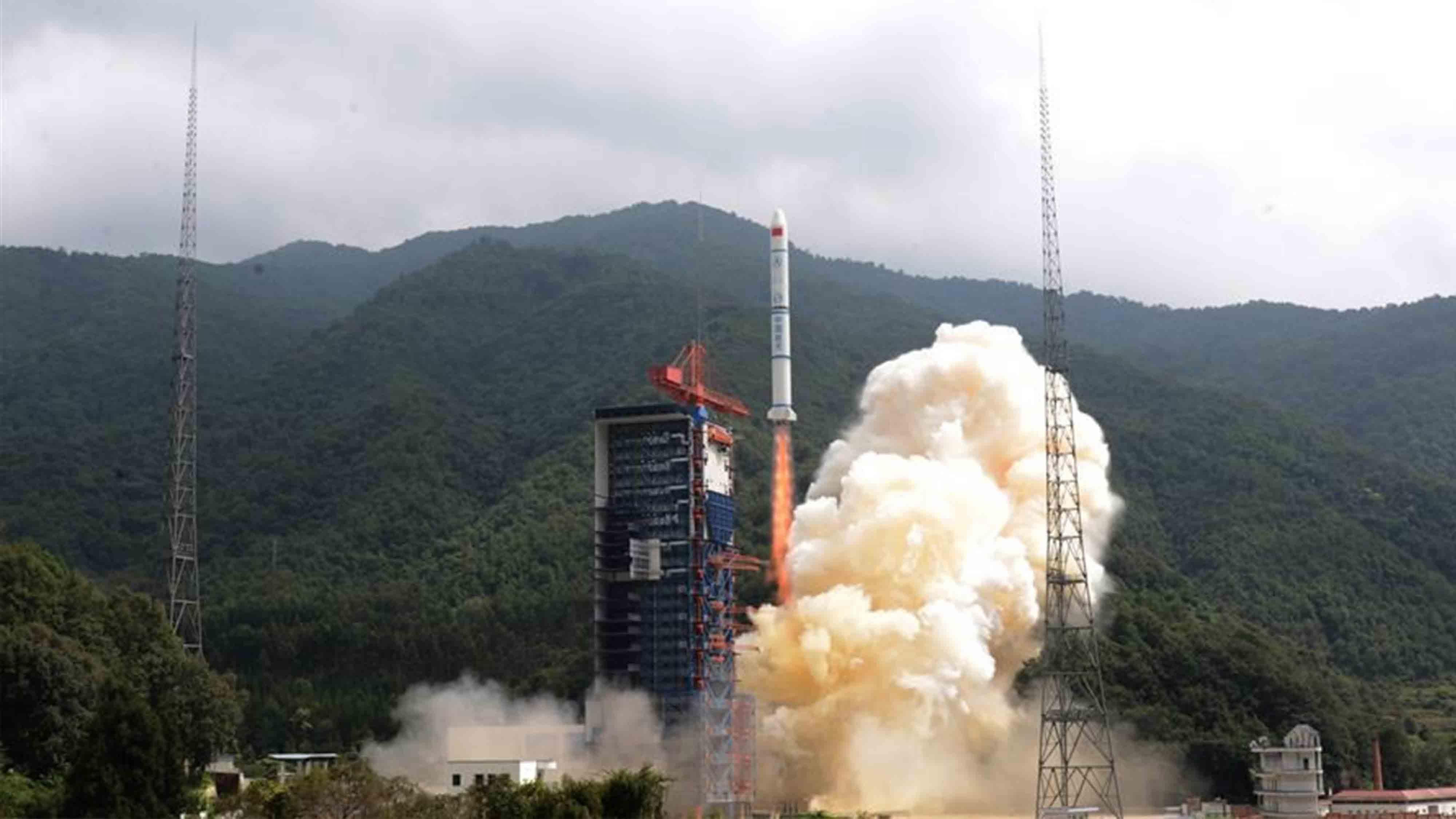
Tech & Sci
13:18, 29-Sep-2017
Three-in-one: China successfully launched 3 satellites in 'comeback mission'
CGTN

China successfully launched a Long March-2C carrier rocket at 12:21 p.m. BJT on Friday, sending three remote sensing satellites to their designated orbit.
The Long March (LM) rocket, carrying three Yaogan-30 01 satellites, was launched from Xichang Satellite Launch Center in southwest China's Sichuan Province.
The satellites are to conduct electromagnetic probes and other experiments on the Earth's orbit.
Flagship rocket
This marks the 251st time that China successfully launched a LM rocket.
The LM-2C, first launched in 1975, is the flagship rocket of the LM series. Rockets of this type have conducted 44 missions with a success rate of 97 percent.

This type is also used in commercial launches, especially in the highly-competitive market of low-orbit launches for small satellites.
"The fourth variation of LM-2C is coming out in three years. We want to make it into the best one in the market," said Chen Minkang, deputy chief engineer of the rocket.
'Comeback mission'
The launch was China's first space mission after the failure of its LM-5 Y2 rocket in July.
Chinese state-run news agency Xinhua said this was a "comeback mission" for the LM rocket series.
"The exact reason for the failure is still under investigation and will be disclosed," said Tian Yulong, Secretary General of China National Space Administration. "The launch of the Chang'e-5 lunar probe is delayed due to the failure, as a similar rocket will be used."

SITEMAP
Copyright © 2018 CGTN. Beijing ICP prepared NO.16065310-3
Copyright © 2018 CGTN. Beijing ICP prepared NO.16065310-3